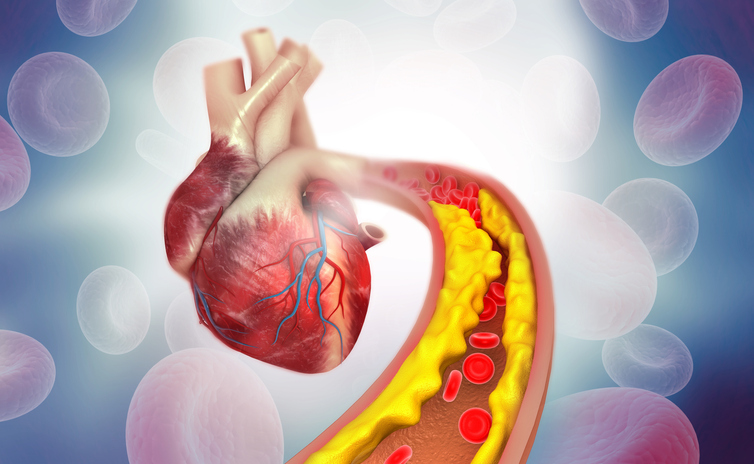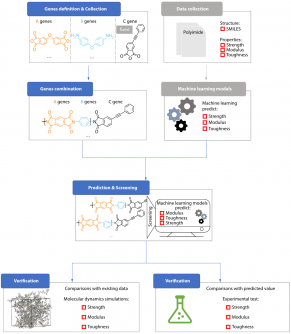An international research team led by scientists from the University of Toronto and the University of Pittsburgh School of Medicine has developed a groundbreaking resource that identifies individuals at genetic risk for elevated low-density lipoprotein (LDL) cholesterol. This “bad” cholesterol is a major contributor to heart disease, which remains the leading cause of death in the United States, claiming nearly 700,000 lives annually.
The researchers classified nearly 17,000 missense coding variants of the LDL receptor (LDLR) gene, mapping the corresponding changes in LDL receptor protein structure and function. Their findings offer vital insights that could enable clinicians to predict patient risk for heart attacks and strokes, paving the way for timely preventive measures and early treatment. This initiative parallels the impact of identifying mutations in the BRCA1 breast cancer gene, which has improved early cancer detection and prevention strategies.
Frederick Roth, PhD, a professor and chair of computational and systems biology at the University of Pittsburgh, emphasized the significance of these findings, stating, “Even with normal LDL levels, a person might be at an elevated risk of a heart attack due to disease-causing variants in the LDL receptor.” He added that pinpointing damaging LDL receptor variants allows healthcare providers to initiate preventive treatments earlier, potentially reducing risks associated with heart disease.
The team’s research was published in the journal Science, detailing how they tested the impact of the variants on LDL receptor cell-surface abundance and LDL uptake. Their work generated sequence-function maps that not only align with existing biochemistry but also provide functional insights and evidence for interpreting clinical variants.
Heart disease risk is heavily influenced by genetic factors, including variations in genes that regulate LDL receptor function. The authors of the study noted that genetic variants in the LDLR gene can lead to elevated LDL cholesterol concentrations, increasing the likelihood of premature atherosclerosis. The condition known as heterozygous familial hypercholesterolemia (HeFH) is one of the most common and severe genetic causes of cardiovascular disease, with molecularly diagnosed cases accounting for approximately 80% of identified instances.
Under normal circumstances, LDL cholesterol plays a crucial role in transporting “good” cholesterol within the body, essential for various bodily functions. Yet, genetic mutations that compromise the LDL receptor can result in dangerously high LDL levels. Identifying pathogenic LDLR variants is vital for accurate diagnosis and effective management of the condition, surpassing traditional lipid profiling methods.
Modern genetic sequencing technologies can rapidly analyze an individual’s genetic code from a small tissue sample, but interpreting this extensive data remains challenging. The research team highlighted that many LDLR coding variants lack definitive clinical classifications, which hampers timely interventions to mitigate disease risks.
The new resource developed by the researchers classifies nearly 17,000 modifications of the LDL receptor gene and assesses the associated changes in protein structure. The findings present a quantitative analysis of cellular LDL uptake relevant to HeFH pathology. These insights could significantly enhance clinicians’ ability to evaluate patient risk for elevated LDL cholesterol.
The resulting sequence-function maps can inform clinical variant interpretation, improve risk estimation for HeFH, and correlate with hyperlipidemia phenotypes in prospective human cohorts. This advancement has the potential to accelerate the diagnosis of familial hypercholesterolemia, enhancing patient outcomes through earlier detection and intervention.
Dan Roden, MD, a clinician-scientist at Vanderbilt University Medical Center, remarked, “New unclassified variants are seen all the time in the clinic, and we often don’t have the evidence we need to inform patient care. These variant impact scores have the potential to increase the number of diagnoses of familial high cholesterol for those with unclassified variants by a factor of ten.”
In a notable finding, the study also identified a specific subset of LDL receptor variants whose LDL uptake was inhibited by high levels of very low-density lipoprotein (VLDL). This unexpected insight highlights the need for further investigation into the implications for human health.
This research is part of a larger initiative co-founded by Roth, known as the Atlas of Variant Effects Alliance. This collaborative effort involves over 500 scientists from 50 countries, all working to create comprehensive maps assessing gene variants that affect the risk of various diseases on a large scale.
The implications of this work could significantly reshape approaches to diagnosing and managing heart disease, ultimately improving patient care and outcomes in an area of health that continues to pose significant challenges globally.







